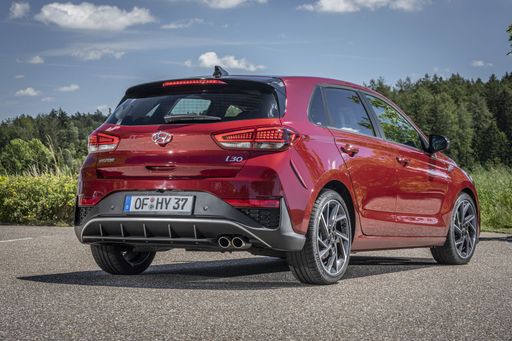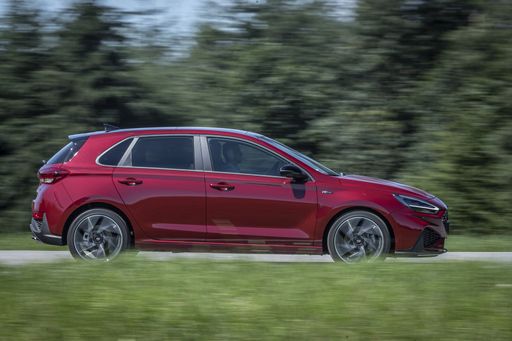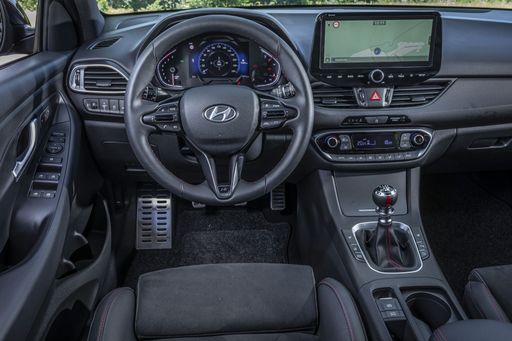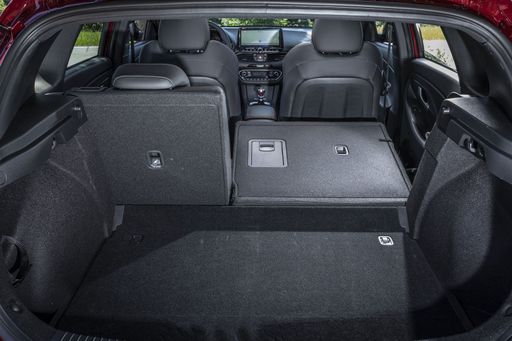Hyundai i30 vs Mazda 6 Saloon – Performance, range & efficiency compared
Everyday use, family trips or long-distance drives – here’s where the differences show.
Discover whether Hyundai i30 or Mazda 6 Saloon fits your lifestyle better.
Costs and Efficiency: Price and efficiency are key factors when choosing a car – and this is often where the real differences emerge.
Hyundai i30 has a decisively advantage in terms of price – it starts at 24000 £, while the Mazda 6 Saloon costs 38500 £. That’s a price difference of around 14494 £.
Engine and Performance: Power, torque and acceleration are the classic benchmarks for car enthusiasts – and here, some clear differences start to show.
When it comes to engine power, the Mazda 6 Saloon has a decisively edge – offering 258 HP compared to 140 HP. That’s roughly 118 HP more horsepower.
In acceleration from 0 to 100 km/h, the Mazda 6 Saloon is noticeable quicker – completing the sprint in 7.60 s, while the Hyundai i30 takes 9.60 s. That’s about 2 s faster.
In terms of top speed, the Hyundai i30 performs slightly better – reaching 197 km/h, while the Mazda 6 Saloon tops out at 175 km/h. The difference is around 22 km/h.
There’s also a difference in torque: Mazda 6 Saloon pulls evident stronger with 320 Nm compared to 253 Nm. That’s about 67 Nm difference.
Space and Everyday Use: Whether family car or daily driver – which one offers more room, flexibility and comfort?
Both vehicles offer seating for 5 people.
In curb weight, Hyundai i30 is clearly lighter – 1291 kg compared to 2027 kg. The difference is around 736 kg.
In terms of boot space, the Hyundai i30 offers somewhat more room – 395 L compared to 336 L. That’s a difference of about 59 L.
In maximum load capacity, the Hyundai i30 performs a bit better – up to 1301 L, which is about 227 L more than the Mazda 6 Saloon.
When it comes to payload, Hyundai i30 clearly perceptible takes the win – 509 kg compared to 360 kg. That’s a difference of about 149 kg.
Who wins the race?
The Hyundai i30 proves to be leads convincingly overall and therefore becomes our DriveDuel Champion!
Hyundai i30 is the better all-rounder in this comparison.

Hyundai i30
Hyundai i30
The Hyundai i30 stands out in the hatchback segment with its sleek design and modern features. It offers a comfortable ride with a well-crafted interior that caters to both driver and passengers. With its emphasis on safety and technology, the i30 provides a balanced driving experience suitable for urban and suburban environments.
details @ hyundai.news
@ hyundai.news
 @ hyundai.news
@ hyundai.news
 @ hyundai.news
@ hyundai.news
 @ hyundai.news
@ hyundai.news
 @ hyundai.news
@ hyundai.news
Mazda 6 Saloon
The Mazda 6 saloon embodies elegant design and a refined driving experience, making it a standout in its class. Its sleek exterior lines are matched by a sophisticated interior that prioritises comfort and style. On the road, the Mazda 6 delivers a balanced performance, blending smooth handling with a responsive drive that's sure to satisfy enthusiasts and everyday drivers alike.
details

|
|
|
|
|
Costs and Consumption |
|
|---|---|
|
Price
24000 - 29300 £
|
Price
38500 - 41600 £
|
|
Consumption L/100km
5.7 - 6 L
|
Consumption L/100km
-
|
|
Consumption kWh/100km
-
|
Consumption kWh/100km
16.5 - 16.6 kWh
|
|
Electric Range
-
|
Electric Range
479 - 552 km
|
|
Battery Capacity
-
|
Battery Capacity
-
|
|
co2
130 - 136 g/km
|
co2
0 g/km
|
|
Fuel tank capacity
50 L
|
Fuel tank capacity
-
|
Dimensions and Body |
|
|---|---|
|
Body Type
Hatchback
|
Body Type
Sedan
|
|
Seats
5
|
Seats
5
|
|
Doors
5
|
Doors
5
|
|
Curb weight
1291 - 1407 kg
|
Curb weight
2027 - 2028 kg
|
|
Trunk capacity
395 L
|
Trunk capacity
336 L
|
|
Length
4340 mm
|
Length
4921 mm
|
|
Width
1795 mm
|
Width
1890 mm
|
|
Height
1455 mm
|
Height
1491 mm
|
|
Max trunk capacity
1301 L
|
Max trunk capacity
1074 L
|
|
Payload
463 - 509 kg
|
Payload
359 - 360 kg
|
Engine and Performance |
|
|---|---|
|
Engine Type
Petrol, Petrol MHEV
|
Engine Type
Electric
|
|
Transmission
Manuel, Automatic
|
Transmission
Automatic
|
|
Transmission Detail
Manual Gearbox, Dual-Clutch Automatic
|
Transmission Detail
Reduction Gearbox
|
|
Drive Type
Front-Wheel Drive
|
Drive Type
Rear-Wheel Drive
|
|
Power HP
100 - 140 HP
|
Power HP
245 - 258 HP
|
|
Acceleration 0-100km/h
9.6 - 13.1 s
|
Acceleration 0-100km/h
7.6 - 7.8 s
|
|
Max Speed
178 - 197 km/h
|
Max Speed
175 km/h
|
|
Torque
172 - 253 Nm
|
Torque
320 Nm
|
|
Number of Cylinders
3 - 4
|
Number of Cylinders
-
|
|
Power kW
74 - 103 kW
|
Power kW
180 - 190 kW
|
|
Engine capacity
998 - 1482 cm3
|
Engine capacity
-
|
General |
|
|---|---|
|
Model Year
2024
|
Model Year
2025
|
|
CO2 Efficiency Class
D, E
|
CO2 Efficiency Class
A
|
|
Brand
Hyundai
|
Brand
Mazda
|
What drive types are available for the Hyundai i30?
Available configurations include Front-Wheel Drive.
The prices and data displayed are estimates based on German list prices and may vary by country. This information is not legally binding.
